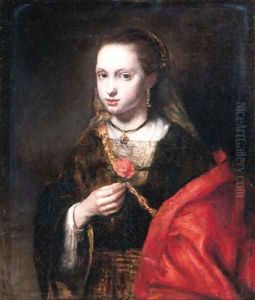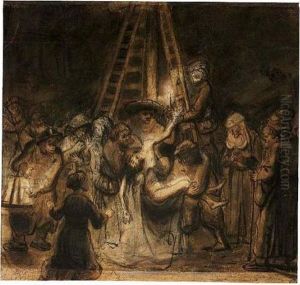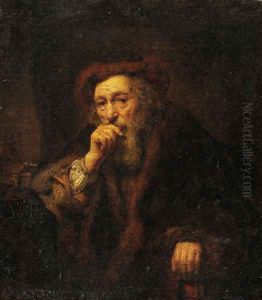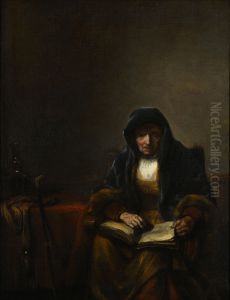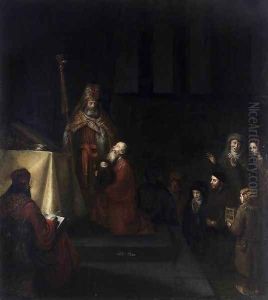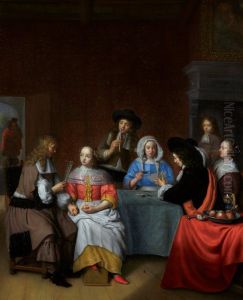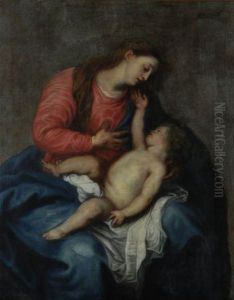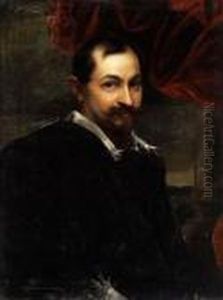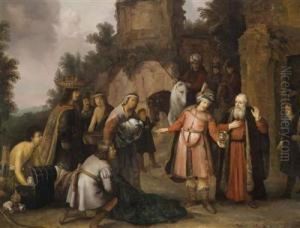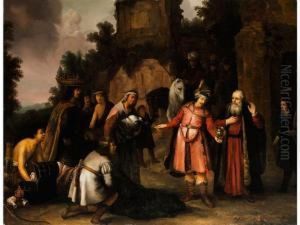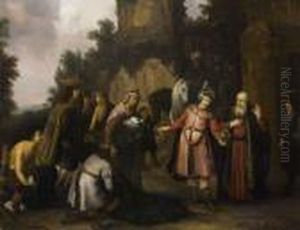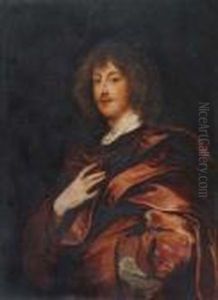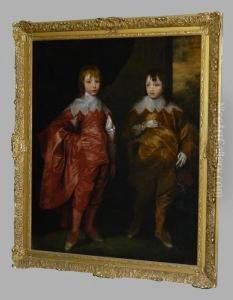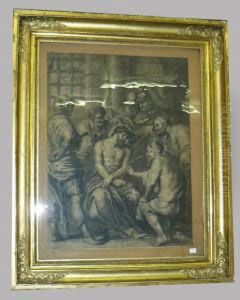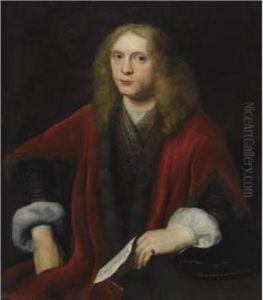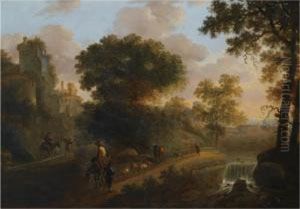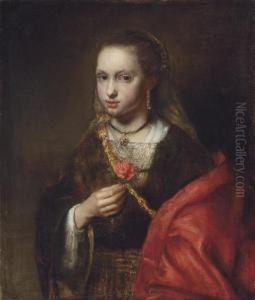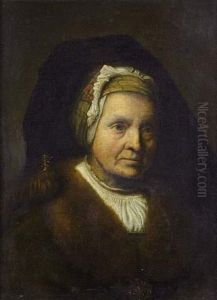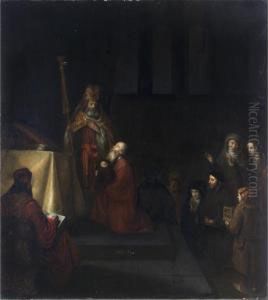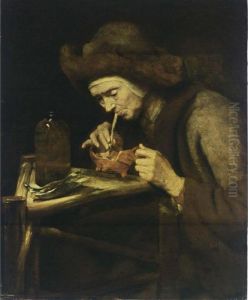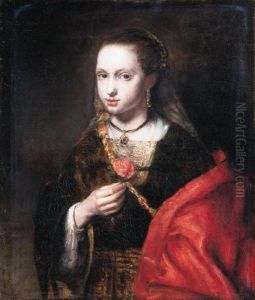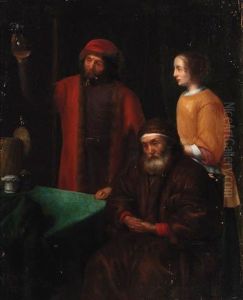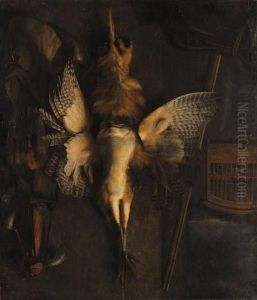Abraham van Dijck Paintings
Abraham van Dijck, sometimes also referred to as Abraham van Dyck, was a Dutch Golden Age painter known for his distinctive style of genre scenes, religious subjects, and portraits. Born in the mid-17th century, his exact birth date is debated, with some sources suggesting 1635 while others propose 1636. His place of birth is also not definitively known, but he is believed to have been born in Amsterdam or nearby.
Van Dijck was a student of the renowned artist Rembrandt van Rijn, studying in Rembrandt's workshop in Amsterdam. Under the tutelage of Rembrandt, van Dijck developed a mastery of chiaroscuro and a sensitive approach to subjects, both of which were characteristic of his mentor's influence. His works often depicted quiet domestic scenes, biblical narratives, and individuals in contemplative states, rendered with a warm palette and a soft, diffused light that reflected the Rembrandt school's emphasis on emotion and humanity.
Despite the quality of his work and his association with Rembrandt, Abraham van Dijck did not gain the same level of fame as some of his contemporaries. Nevertheless, he was a respected artist in his time and his paintings were sought after by collectors. He was active mainly in Dordrecht after moving there in the 1650s, and it is from this period that much of his known work dates.
Van Dijck's paintings are characterized by their use of light and shadow to achieve a sense of depth and volume. His subjects, often depicted in introspective moments, are set against a backdrop of everyday life, imbuing his scenes with a sense of realism and humanity. His portraits are notable for their psychological depth and the dignified portrayal of his sitters.
Abraham van Dijck's career was relatively short, as he died in Dordrecht in 1680. Despite his early death, he left behind a body of work that continues to be appreciated for its contribution to the Dutch Golden Age of painting. Today, his works can be found in various museums and collections around the world, offering insight into the period's art and the lasting influence of Rembrandt's legacy.
